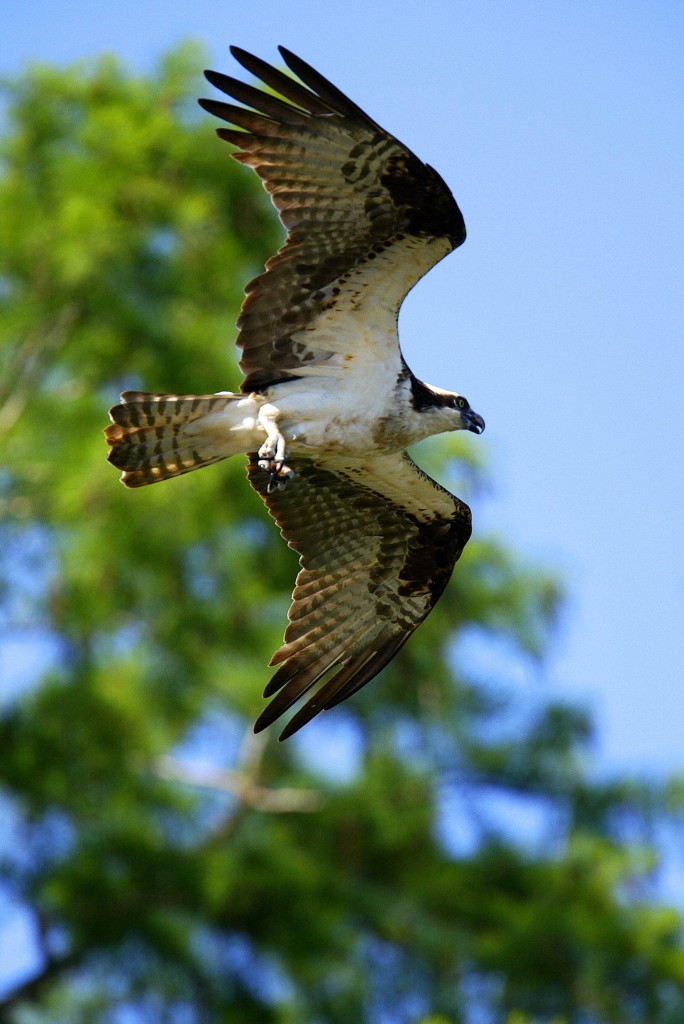Join the crowd – Watch ospreys in 2013
Eastern Golden Eagle Working Group receives award
March 1, 2013Whimbrels in Brazil
March 8, 2013
Over the next few weeks, bird watchers throughout the northern hemisphere will welcome osprey as they return to their breeding grounds. This greeting is an annual ritual that for many marks both the arrival of spring and the hope for a productive breeding season. For the second year, The Center for Conservation Biology is sounding the call to OspreyWatchers throughout the world to record and share their observations with a growing online community of global citizens that are linked by an interest in osprey biology and a concern for aquatic environments. In its debut 2012 season, OspreyWatch included a network of more than 800 observers that recorded observations on 1,600 nests in 5 countries.

Osprey along James River in the Chesapeake Bay. Photo by John DiGiorgio.
Osprey are one of very few truly global sentinels for aquatic health. They feed almost exclusively on live fish throughout their entire life cycle. They are a top consumer within aquatic ecosystems and are very sensitive to both overfishing and environmental contaminants. Nearly all populations breed in the northern latitudes and winter in the southern latitudes, effectively linking the aquatic health of the hemispheres. Their breeding season in the north is highly seasonal making them an effective barometer of climate change. The overarching objective of OspreyWatch is to engage a community of observers to record breeding information on a large enough spatial scale to be useful in monitoring aquatic health.
OspreyWatch is a user-friendly, internet platform that allows observers across the globe to map their nests, log observations, upload photos, and interact within an observer forum. Information entered into the platform will be immediately accessible to users and will be summarized following the breeding season. To join a growing community of global citizens, please visit http://www.osprey-watch.org and become an OspreyWatcher.
The Center for Conservation Biology is a research group shared by the College of William and Mary and the Virginia Commonwealth University. Our primary focus is to conduct research that solves conservation problems.
Written by Bryan Watts
March 3, 2013




